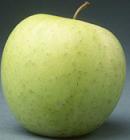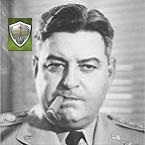ColinWright
Posts: 2604
Joined: 10/13/2005
Status: offline

|
quote:
ORIGINAL: vahauser
quote:
ORIGINAL: ColinWright
There's another consideration as well -- something that I've run into.
This may strike some as heresy, but TOAW does not offer a fully comprehensive simulation of warfare. You can do things in it that you can't do in real life.
...Like stick artillery in the front lines and use it to provide ranged fire support.
So you may work out that the _____ field howitzer should have an AT value of 10 and that in the typical unit, there would be the equivalent of one rifle and three light rifles for every actual artillery piece.
However, if you simply apply these conclusions, you may find that you've created a scenario where it pays players to use their artillery in very ahistorical ways.
Maybe not. It would depend on the scenario. This sort of consideration is what inclines me towards scenario-specific design. After all, the notion of a universal engine is not necessarily completely valid. One could argue that it is the designer's job to ameliorate the resulting distortions, not reinforce them.
I generally agree that each .eqp file and each scenario should be designed on a scenario-by-scenario basis. This, to me, is the biggest problem with the Directive 21 scenario currently being playtested--it tries to tackle too big a time frame (1941-1945) on a game scale that doesn't quite fit (15km hexes and 1/2-week (or 25km hexes and 1-week) turns would have been better). The unit density issues are very apparent in that scenario, too. [Aside: I started a thread a year or so ago on this very issue of density problems at the smaller hex sizes.]
But, to return to the topic at hand, how designers decide to handle representing rifle squads within their scenario can vary greatly. This is amply shown by the variety of replies in this thread. I prefer the Golden Delicious/Curtis Lemay approach but also using an .eqp file of my own design for each scenario.
Yeah. I'm sure it's already on the wishlist, but density penalties and when they apply really should be designer controlled. Aside from the question of whether Norm's values really do represent some kind of median -- I think they're too severe -- it would also eliminate the problem noted with the approach used by Curtis and others, where for one reason or another, they've upped the weapon count from what others might employ.
Parenthetically, one thought that occurred to me when reading about Russian mass attacks -- and mass attacks in general -- is that some armies probably didn't really have a choice.
The traditional eighteenth-nineteenth century model of soldiers packed in like sardines offers one obvious advantage. People are much braver -- and much easier to control -- if they have their fellows right alongside them. I was in riots in the Sixties as a kid, and this is true. If you're part of a mass, you'll do things you'd never have the nerve to do if you felt isolated. Like fling rocks at heavily armed cops and then charge them. I remember the thoughts going through my head. Pack people tightly enough together, and you just don't feel a sense of personal danger -- at least so long as the crowd in general doesn't panic.
For this reason, armies have generally been as densely packed as the firepower of the era will permit -- and sometimes will past the era. Armies that had well-motivated material and could afford the luxury of extensive infantry training -- the German army of World War II, the Americans, the British -- could launch attacks with the soldiers widely dispersed.
Other armies -- the Russians of 1941-43, the Chinese of 1950-53 -- did not. They probably could not. To maintain control, to keep everyone advancing required a dense mass. As to what that meant one machine gun could do -- well, that just had to be accepted.
It's interesting. Now, how completely valid this is, and how to reflect it in design, I don't know. More generally, the whole topic of morale, and 'proficiency' -- which are often two very different things -- could do with a more refined treatment in TOAW.
< Message edited by ColinWright -- 3/18/2009 7:05:04 AM >
_____________________________
I am not Charlie Hebdo
|
 Printable Version
Printable Version










 New Messages
New Messages No New Messages
No New Messages Hot Topic w/ New Messages
Hot Topic w/ New Messages Hot Topic w/o New Messages
Hot Topic w/o New Messages Locked w/ New Messages
Locked w/ New Messages Locked w/o New Messages
Locked w/o New Messages Post New Thread
Post New Thread